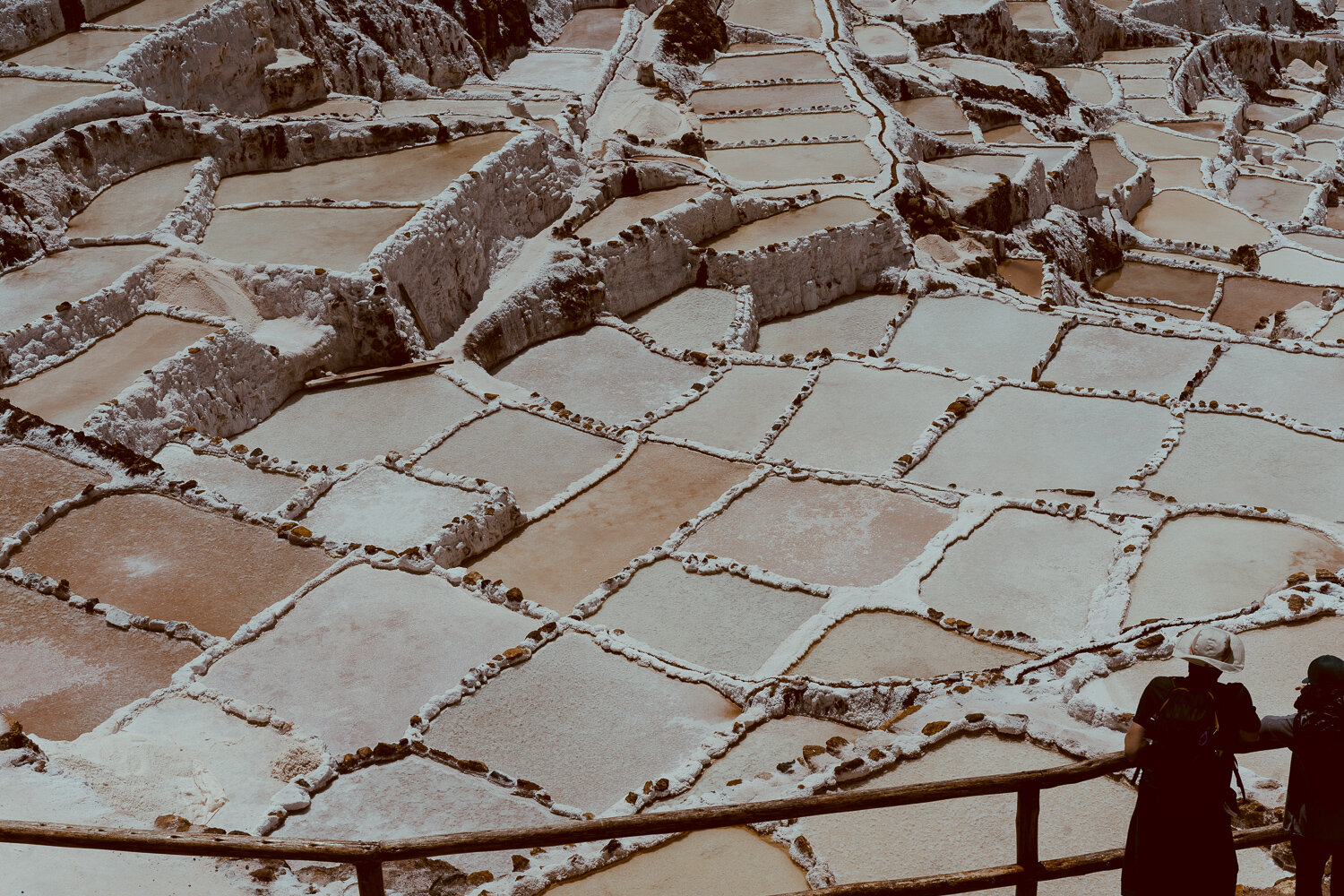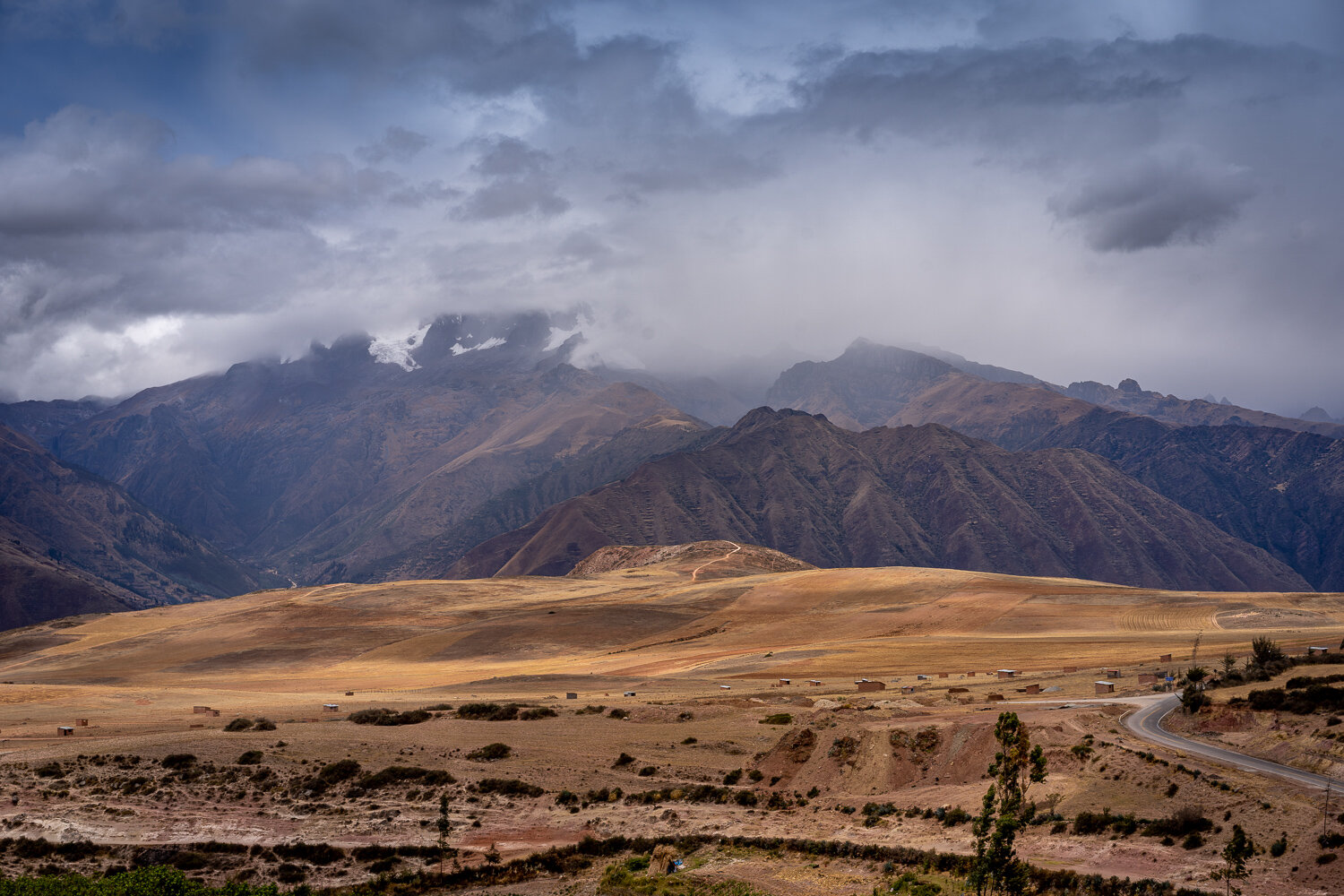Unique Landscape at Maras and Moray
We took our first group trip to Maras salt flats and Moray archaeological site, both within a couple of hours drive from Cusco.
Our tour made a first stop at Chinchero, where we, for the first time, learned about alpaca.
Apollo insisted he needed a pair of alpaca gloves. Since they would not add much weight to our luggage, and he never had a pair of gloves, I satisfied his wish.
Little did I know in the following weeks in Peru, we had way too many chances to interact with alpaca. Nor did Apollo even remember his new gloves.
Moray is an archaeological site that consists of platforms of concentric circles designed by the Incas. Besides creating unique landscape, the height and layout of these platforms produce gradual changing microclimates, with temperature differences of as much as 15°C (27°F).
According to the historian Edward Ranney, the Incas used the terraces of Moray as a place for special agriculture, perhaps for the development of their most precious crop that was the coca leaf.
Not particularly well versed in Inca wisdom nor agriculture, I was simply blown away by the beauty of the rural landscape. Can you see the sophisticated Inca pattern in the farm?
Here are a couple other shots from different platforms and angles.
As much as I desire sunshine during travel, I love the drama of rain clouds.
We encountered this many times in South America, and couldn't predict if we would be showered or stay dry. This is one of the unpredictable yet beautiful moment.
As for Maras, our little guy fell asleep on the tour bus. I had to stay behind. Fortunately, he woke up before everyone came back. So we did an unguided walk ourselves and caught a glimpse of the unique salt flats.
See more posts about our family trip in Peru.


















We passed the highest point in our travel, at 4900m elevation, on the Colca Canyon trip, saw many alpacas, vicunas, and a few Andean condors, the largest flying bird in the world.